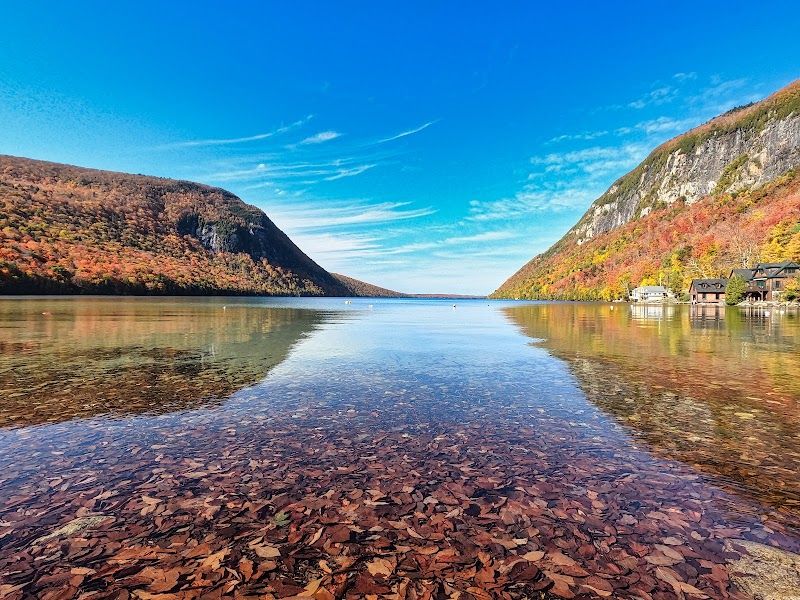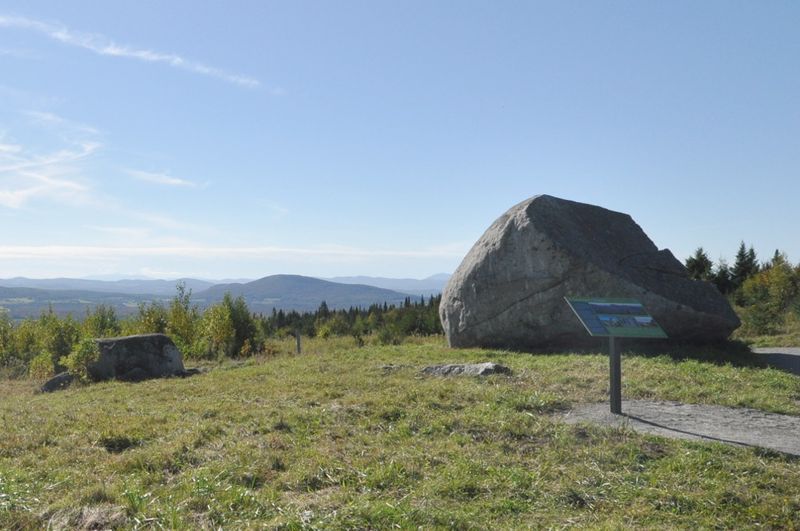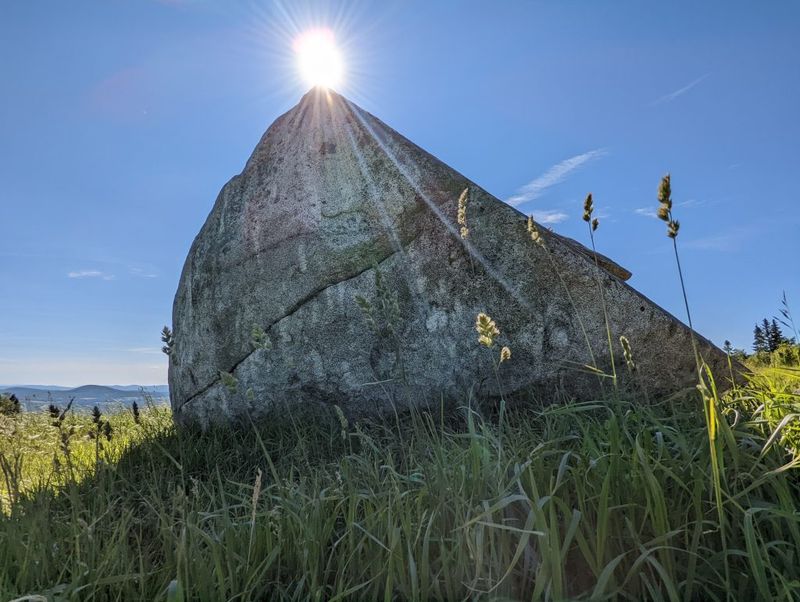Nestled in Vermont’s Northeast Kingdom, Westmore is home to a remarkable natural wonder. Thousands of years ago, massive ice sheets carved and shaped this landscape, leaving behind an impressive collection of rocks and boulders. Today, visitors can explore this natural rock garden at Sentinel Rock State Park, where ancient glacial formations tell the story of Vermont’s icy past.
Sentinel Rock: Nature’s Monumental Sculpture

Standing like a silent guardian over Westmore, Sentinel Rock is a massive boulder that weighs several tons. This enormous glacial erratic was transported and deposited by retreating ice sheets over 13,000 years ago.
Perched at an elevation of 2,034 feet above sea level, the rock offers spectacular panoramic views of the surrounding countryside and Lake Willoughby. Visitors often feel a sense of awe when standing beside this natural monument.
Local legends have surrounded this impressive formation for generations, with some early settlers believing it had mystical properties. Today, it serves as both a geological classroom and a testament to the raw power of glacial forces.
Lake Willoughby: A Fjord-Like Glacial Masterpiece

Often called the “Lucerne of America,” Lake Willoughby showcases the dramatic sculpting power of ancient ice. The deep, crystal-clear waters fill a basin carved by glacial erosion, creating a fjord-like appearance that’s rare in the United States.
Dramatic cliffs of Mount Pisgah and Mount Hor rise nearly 1,000 feet on either side of the lake. Their steep faces were shaped as massive ice sheets ground through the valley, removing tons of rock and debris.
The lake stretches nearly five miles long and reaches depths of over 300 feet in places. Its unusual clarity and cold temperatures reflect its glacial origins, making it a living reminder of Vermont’s ice age past.
Accessible Wilderness: Trails Through Glacial History

Winding through 356 acres of boulder-studded terrain, the trails of Sentinel Rock State Park invite explorers of all abilities. ADA-accessible paths make this geological wonderland available to everyone, with thoughtfully designed routes that showcase the most impressive formations.
Interpretive signs dot the pathways, explaining how massive ice sheets once covered the entire region. Visitors learn to identify different types of glacial deposits, from towering erratics to fields of smaller rocks sorted by the melting ice.
Peaceful picnic areas nestle among the formations, offering quiet spots to contemplate the ancient forces that shaped this landscape. The minimal development preserves the natural character while making the area’s glacial story accessible to all.
A Working Farm Transformed: Conservation Meets History

Before becoming a state park, this remarkable glacial landscape served generations of Vermont farmers. The Wright family worked this challenging, rocky soil for decades before donating the land in 1997 to ensure its preservation for future visitors.
Remnants of the property’s agricultural past can still be spotted among the glacial features. Old stone walls, constructed by farmers clearing fields of smaller rocks, now wind through forests that have reclaimed former pastures.
This transition from farmland to conservation area represents a common Vermont story. As agriculture became more challenging on the rocky hillsides, the land’s true value emerged in its natural features—the very obstacles that made farming difficult now draw visitors seeking connection with geological history.
Seasonal Splendor: The Changing Face of Glacial Terrain

Westmore’s glacial garden transforms dramatically with each passing season. Spring brings wildflowers pushing through rocky soil, creating colorful contrasts against the ancient gray boulders deposited millennia ago.
Summer visitors enjoy cool microclimates created by massive rocks, where temperatures can drop several degrees in their shadows. Fall paints the landscape with Vermont’s famous foliage, highlighting the contours of the glacial terrain with brilliant reds and golds.
Winter reveals the most authentic connection to the area’s icy origins. Snow-covered boulders and frozen Lake Willoughby offer glimpses of how this landscape appeared as glaciers began their retreat, making it an ideal season for contemplating the powerful forces that shaped Westmore’s natural rock garden.



